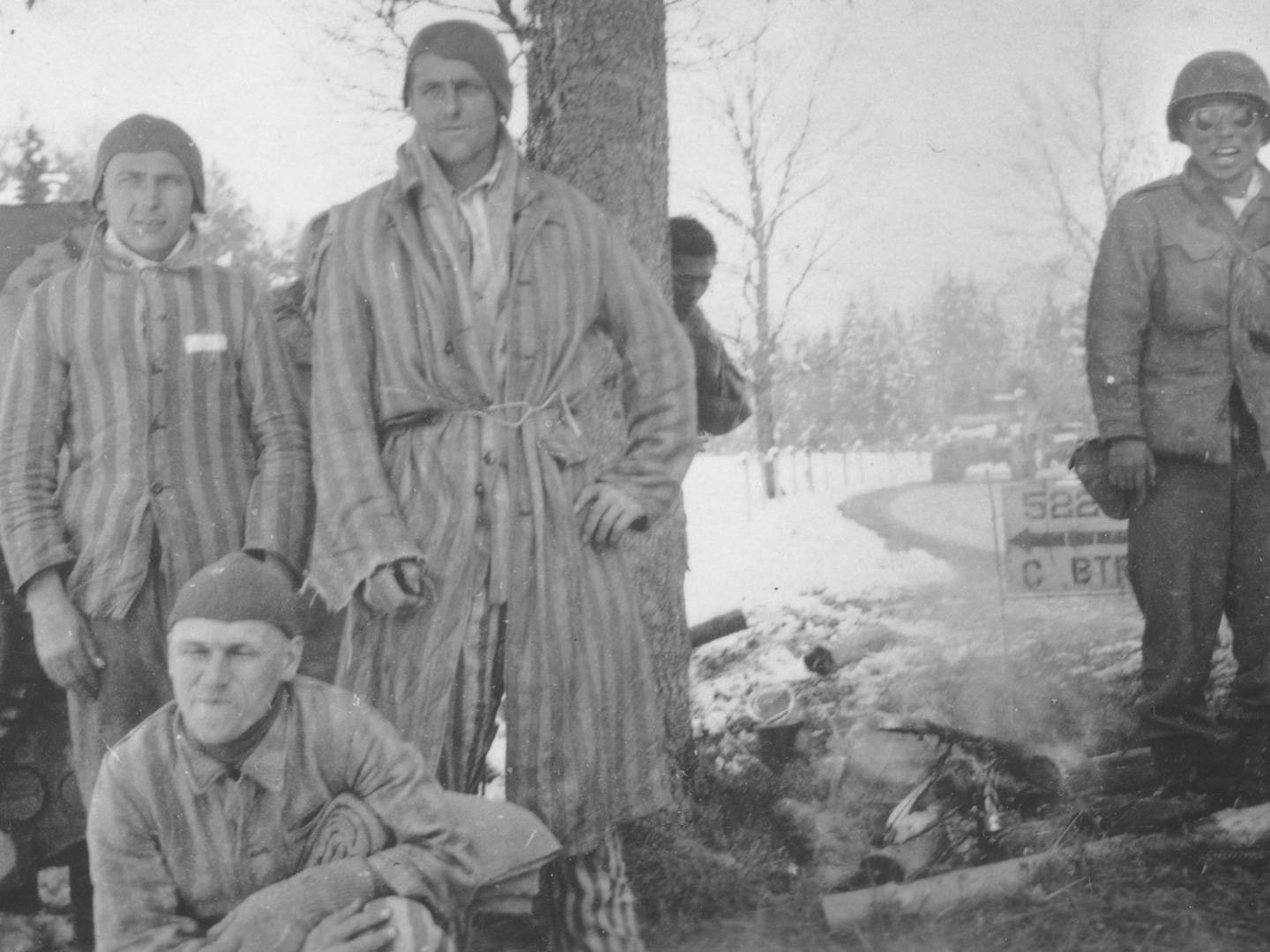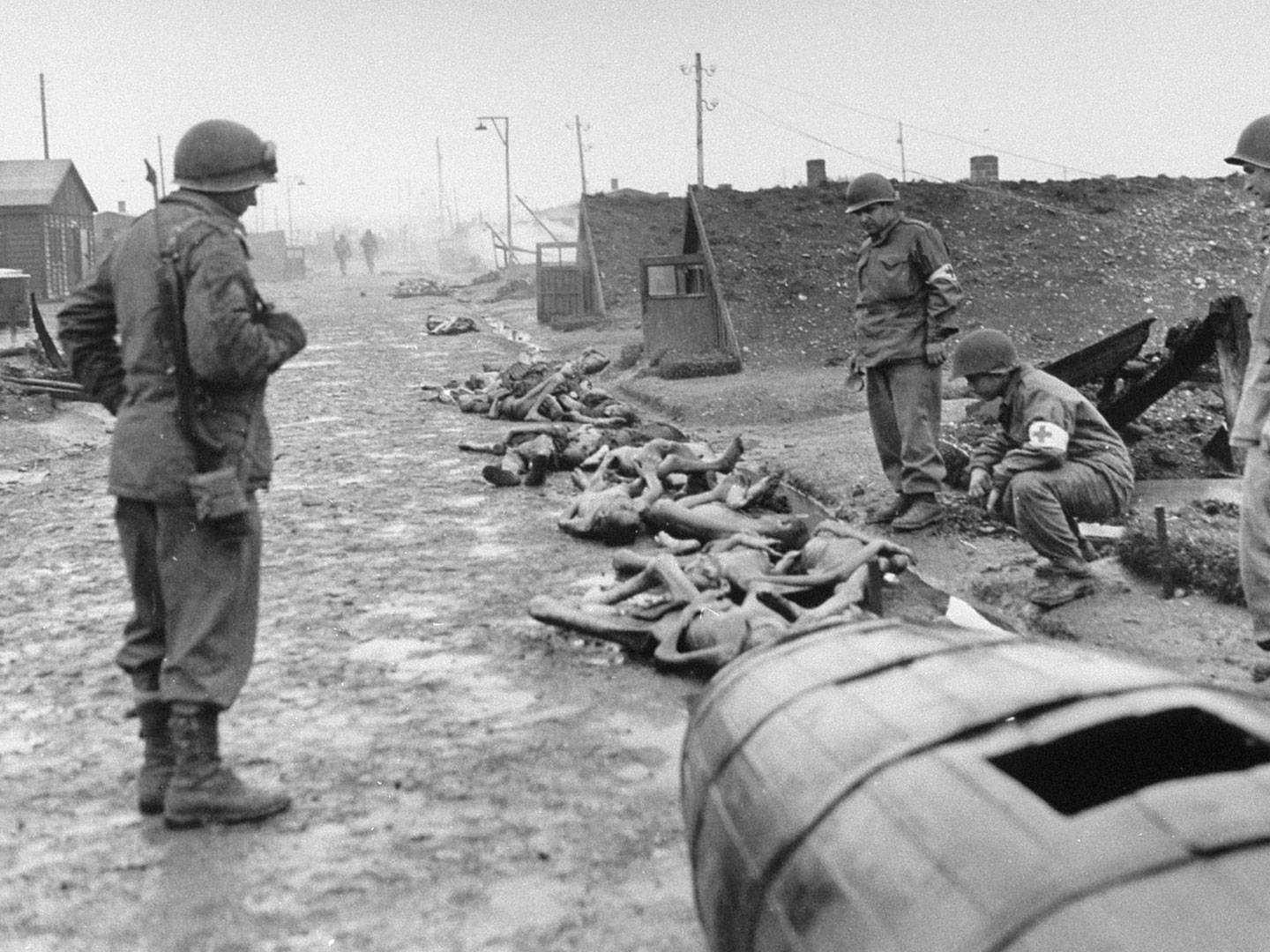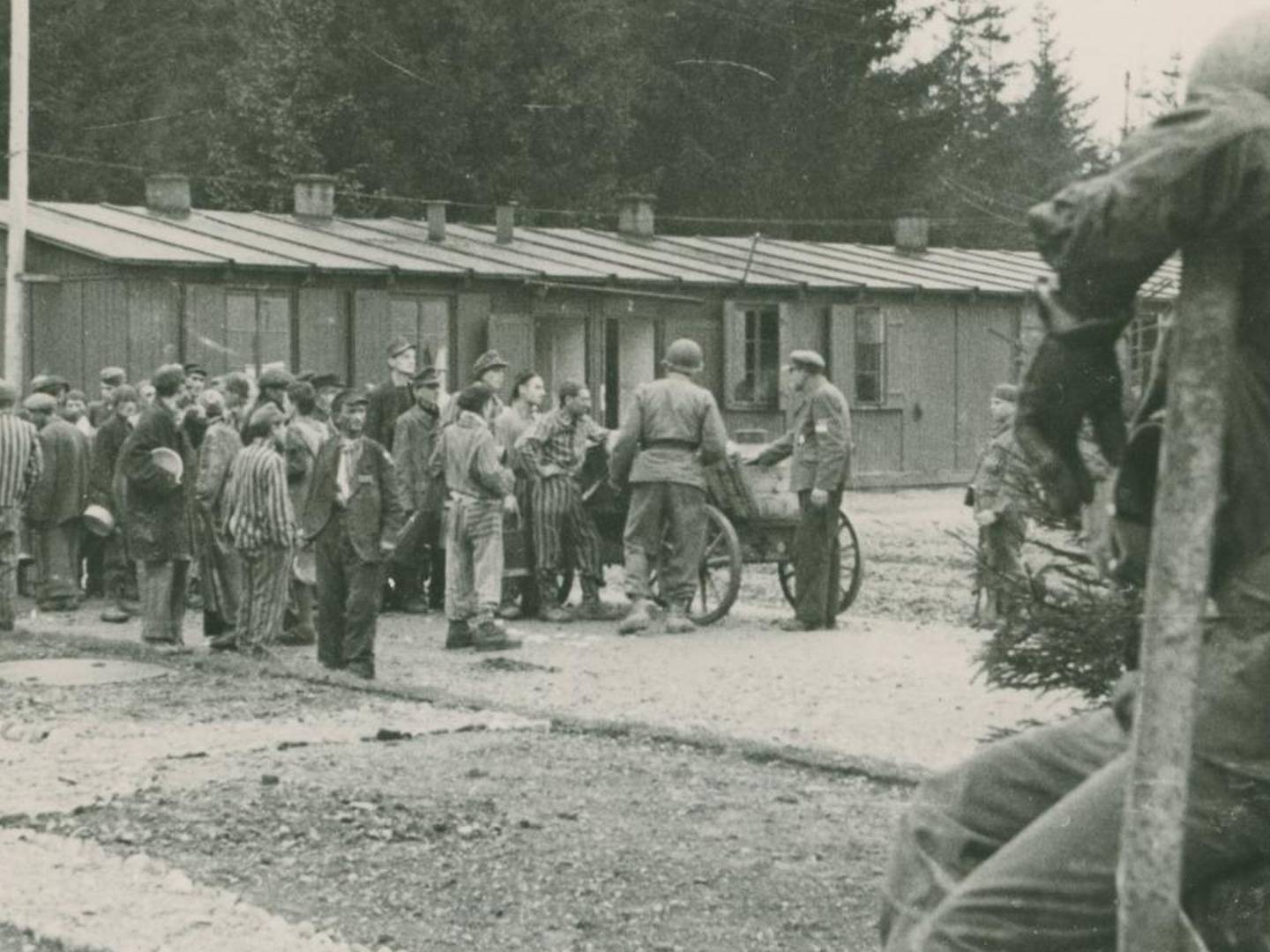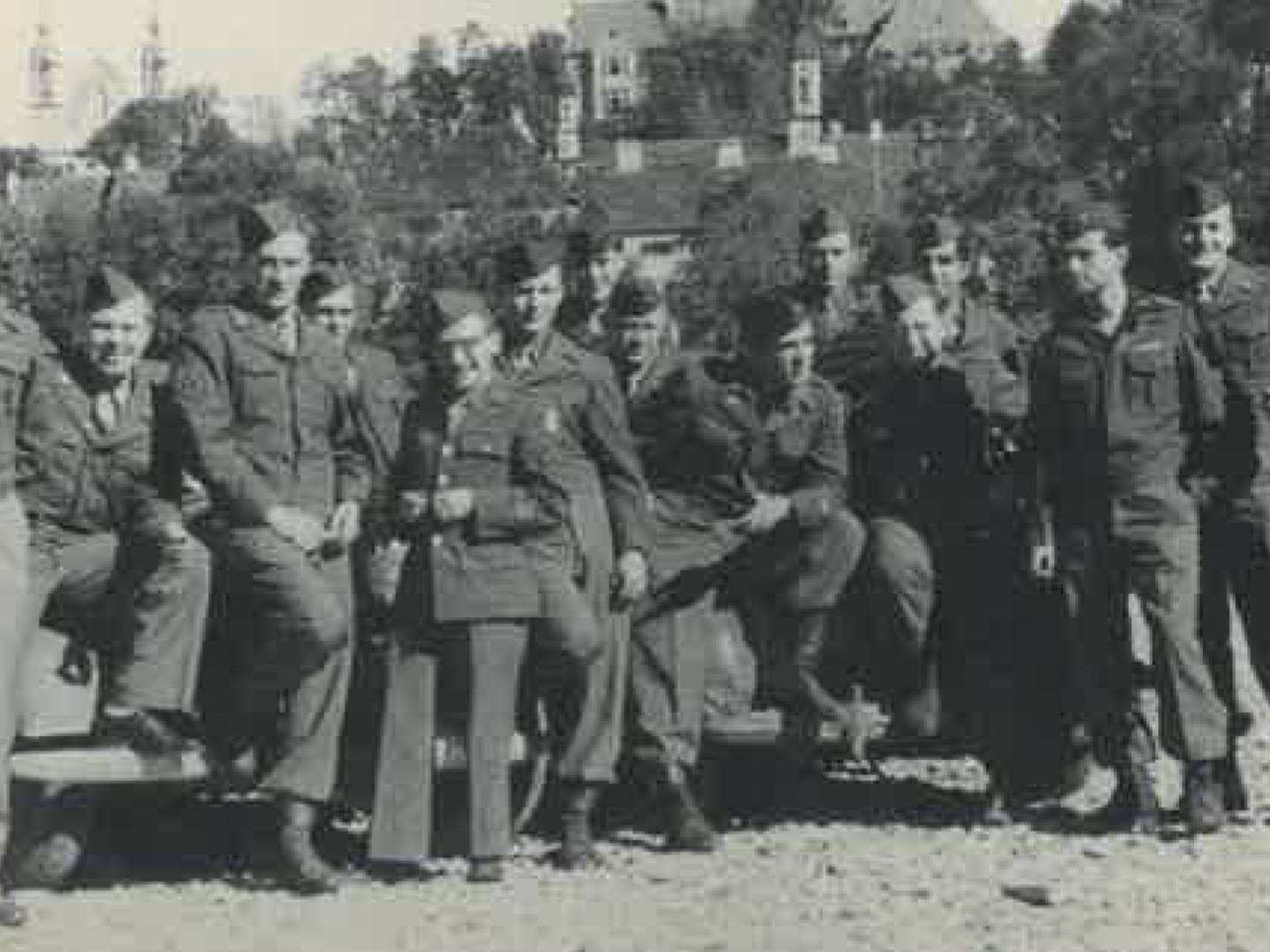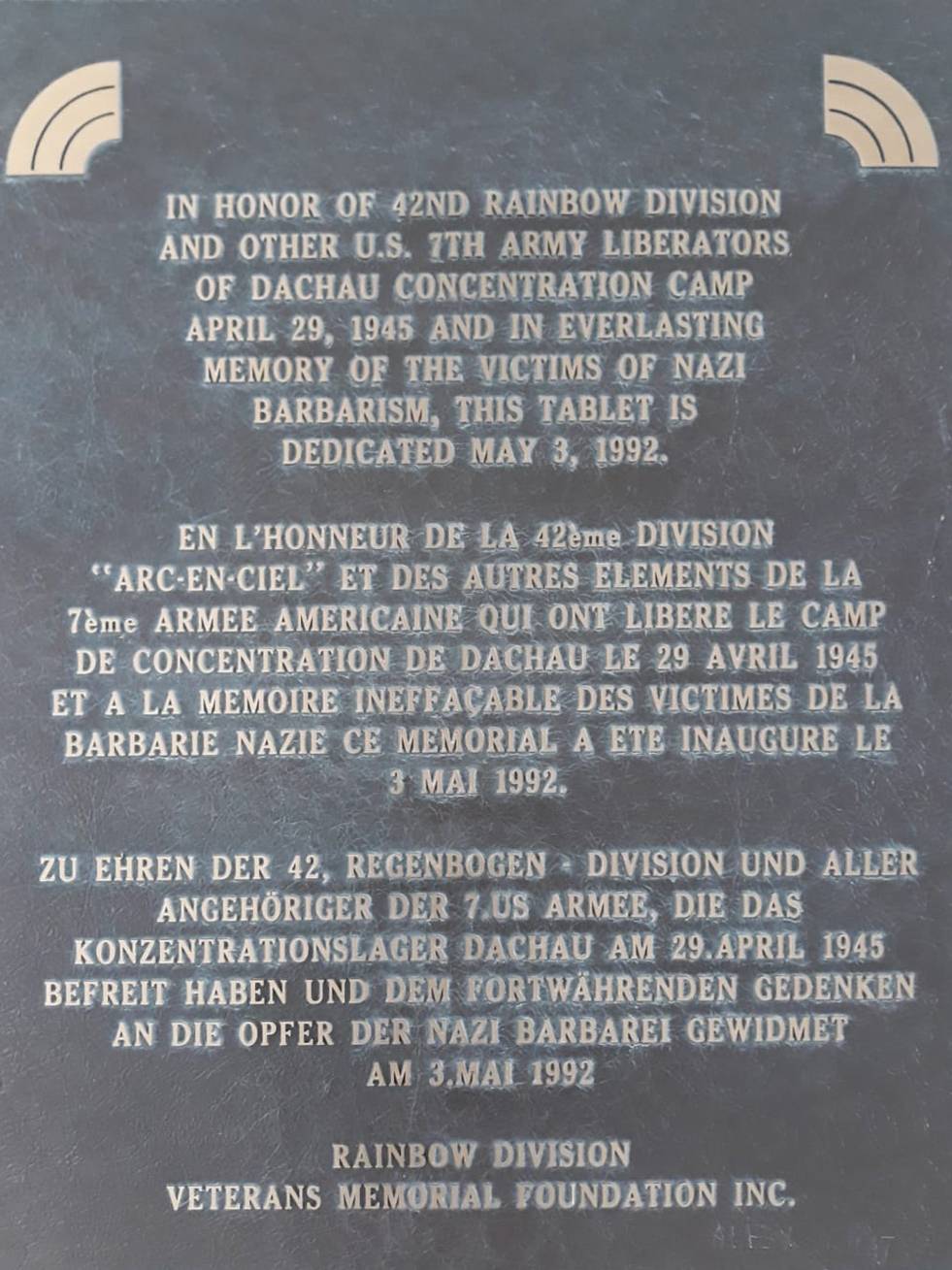Liberators
On April 27, 1944 units of the American 103rd Infantry Division, and 10th and 12th Armored Divisions reached the town of Landsberg along two different routed. On their way, they discovered and liberated several camps of the Landsberg/Kaufering concentration camp subcamp complex. In the camps and their surroundings, the soldiers came upon individual survivors. They were horrified by what they saw:
I have seen today the full, complete bestiality of what was one of the Nazis horror concentration camps. I saw for myself with my own eyes the ungodly sight. Debbie, I hope that you will never see what I will see until I die.
– Albert H. Gaynes about liberation
Before the arrival of the American soldiers, the majority of the prisoners had been evacuated towards the Dachau concentration camp. On April 29, 1945 the 42nd and 45th American infantry divisions reached the main camp and liberated approximately 32,000 concentration camp prisoners. Among those liberated, there were also former prisoners of the Landsberg/Kaufering subcamp complex. Several thousand prisoners had already been driven southwards on other death marches, however. An unknown number of concentration camp prisoners did not survive the death marches. They died of starvation and exhaustion or were murdered by the SS.
In the next few days, various American units came across concentration camp prisoners on these death marches throughout Upper Bavaria. In Waakirchen, the 522nd Field Artillery Battalion, a special unit of Americans with Japanese roots, liberated one of these death marches. Amongst those liberated was the then 16 year-old Solly Ganor, who had previously been evacuated from the Kaufering X subcamp at Utting:
A tank appeared on the road below me. Then something that looked like a Jeep. I closed my eyes and waited for a bullet to put an end to all my suffering. Then I heard someone speaking English. As I opened my eyes again, four men in khaki uniforms came towards me. They looked unshaven and tired. I was amazed how oriental their faces were. (…) I stared at them, unable to grasp the situation. Were they Japanese?
– Solly Ganor about liberation


